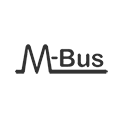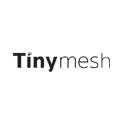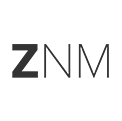Wireless Solutions
For Smarter Meter Reading

Energy Efficient

Long-Range

Reliable
Automatically collect consumption data from any meter (electricity, gas, water, heat cost allocator, flowmeters, etc.) using highly cost-effective Automatic Meter Reading (AMR) RF modules.

The Shortest Time To AMR Implementation:
Radiocrafts Compact RF Modules

Simplify Meter Reading, While Collecting The Metrics
Needed For Consumer Billing, Improved Energy Efficiencies and Loss Reduction
Eliminate the expense of human meter readers by using Automatic Meter Reading Radio Frequency (RF) modules combined with Smart Meters. Realize not only immediate labor savings, but also faster billing cycles and the ability to stem — in real-time — utility losses and leakages. And meet your customers’ demands for real-time utility consumption metrics for their efficiency programs.
Radiocrafts has millions of robust modules installed in demanding locations worldwide. Work with our Automatic Meter Reading experts to determine which AMR technology best fits your existing systems and local practices. Radiocrafts AMR solutions range from standardized protocols — like Wireless M-Bus and IEEE 802.15.4 — to proprietary solutions such as the Tinymesh™ Protocol.

Long-Range
Wireless Automatic Meter Reading Solutions
Are your meters battery-operated and typically installed in basements or below grade (e.g., in pits)? Then our Radiocrafts Wireless M-Bus (EN 13757) at 169-MHz may be your solution. Our narrowband Wireless Meter-Bus provides long-range, high-performance radio reading of battery-operated meters. These AMR modules are ideal for local wireless networks, as well as drive-by or walk-by meter reading. And the Open Metering System’s (OMS’s) new frequency definitions for M-Bus equipment has effectively turned the EN 13757 into both a global standard and global solution.

Low Power
Battery Operation
A large part of the AMR market requires battery operated meters. This is particularly true for gas and water meters that do not have a mains connection. This means that the radio transmitters need to be extremely low power, and be in “sleep mode” most of the time. The requirement to gas and water meters is that a battery should last for 15 – 20 years. The Radiocrafts’ Wireless M-Bus modules are designed for very low power consumption, and meet and exceed those challenging requirements.
AMR RF Technologies
Proven In Millions of Installations

Wireless M-Bus
- Low-power, long-range, meter reading
- Ideal for reading battery-powered meters below ground level
- EN 13757 as de facto world standard

Tinymesh
- Cover a large area with a single reader/gateway
- Ideal for self-configuring, self-healing mesh networks
- Cloud-based meter management & reading

ZNM
- Monitor, control, inform, & automate the delivery of utilities
- Well established, widely accepted, IoT-friendly protocol
- Used in ZigBee® Smart Energy and 6LoWPAN interoperable standards
Automatic Meter Reading Applications
For Radiocrafts AMR RF Modules

Electricity Meters
- Need Slave, Master, or Repeater functionality? Then our Wireless Meter-Bus (M-Bus) may be for you.
- Need to cover a large area? Ask us about our Tinymesh™ modules. We can set up a full mesh network to cover very large areas, as we done extensively in India.
- Is connectivity to In-Home Displays (IHDs) a key consideration? Our IEEE 802.15.4 based AMR modules provide meter communications in a protocol widely accepted in home automation systems.

Water Meters
- To maximise the water meter’s battery life, our Wireless M-Bus at 868-MHz (with T mode or C mode) can be used to minimise transmission times (and therefore extend battery life).
- For basement or underground installations, we frequently recommend our 169-MHz Wireless M-Bus modules: Their high power and narrowband radio offers long-range meter reading solutions.
- Radiocrafts Pulse Counter Module (MPC1) can be connected directly to a mechanical water meter with pulse output.

Gas Meters
- Maximise gas meter battery life by minimising transmission times using our Wireless M-Bus at 868-MHz in T or C mode.
- Use our high power, narrowband, long-range reading 169-MHz Wireless M-Bus modules for gas meters in basements or far from the gateway.
- Directly connect to gas meters with a pulse output using Radiocrafts Pulse Counter Module (MPC1).
Other AMR Applications

Heat Meters & HCAs
Low-cost and efficient use of battery power are key selection drivers for AMR modules for heat meters and heat cost allocators (HCAs). Radiocrafts 868-MHz Wireless M-Bus modules fit the bill: The C mode features the efficient frame format B, combined with a compact frame (that removes redundant data). The 868-MHz Wireless M-Bus module provides very efficient data transfer, with lowest current consumption, making it ideal for economical AMR for meters with small batteries.

Data Concentrators
The Data Concentrator (sometimes called a Gateway) receives the metering data and sends it back to the billing system. For Wireless M-Bus meters, the same module as in the meter can be used, but in Master mode. The Radiocrafts modules can handle two-way communication and encrypted data for a large number of meters (Slaves) with very short response times, using patented technology. For a ZigBee® or Tinymesh™ network, the RF module will be the network controller, and act as a gateway to a cloud service.

In-Home Displays
In-Home Displays (IHD) allow consumers — and their Home Energy Management programs — to receive real-time information regarding their use of utilities: typically electricity, natural gas, and/or water. A battery (or plugged-in) display polls the meters for updates using the Wireless M-Bus protocol. Another popular AMR technology for In-Home Displays is the ZigBee® mesh protocol.

Find The Info You Need For Your Network of AMR RF Devices

Top 5 AMR Questions Answered
1. What wireless technologies are used for AMR?
There are different wireless technologies used for AMR systems in the world today, based on the specific needs, availability of power (battery driven or not), local radio regulations, density of meters, how often meters need to be read, the infrastructure, etc. Some radio networks are based on proprietary communication protocols, and others are based on industry standards. Among the standardised protocols we find Wireless M-Bus, ZigBee and 6LoWPAN-based solutions such as Wi-SUN and ZigBee IP.
Wireless M-Bus is developed for battery operated meters, such as water, gas and heat (heat cost allocators). It has always had a big emphasis on low power operation. Later the standard was extended to include communication on 169 MHz. This has improved the range and reliability of reading water meters that are placed in basements or pits, or gas meters in steel cabinets; in general not so radio-friendly environments. Narrowband operation at 169 MHz is a robust solution for any harsh environments.
ZigBee has been used mostly for communication within a house of flat, between electricity meter, gas meter and a display (In House Display, IHD). It has been installed in the US, and in UK, but to a lesser extent in rest of Europe.
6LoWPAN is a newer technology that enables IPv6 communication all the way to the end node. Due to a relatively high power consumption it is used for electricity meters, but not for water and gas. ZigBee IP and Wi-SUN are examples of protocols with use 6LoWPAN as part of their protocol stack.
Radiocrafts offers solutions within all these technologies, and more information can be found on our product pages. Wireless M-Bus is supported by the MBUS3, MBUS4 and MPC1 products. ZigBee is supported by the ZNM products. And 6LoWPAN protocols can be run on the IEEE 802.15.4 platforms.
2. What is the most commonly used wireless technology used in Europe for AMR?
The most commonly used wireless technology in Europe for meter reading is Wireless M-Bus. The installation base is tens of millions. The first solutions used mode S and T on 868 MHz. These have later been complemented with mode C, also at 868 MHz, optimizing current consumption and thereby enabling drive-by reading requiring more frequent transmissions. Mode N using ultra narrowband technology at 169 MHz is growing in popularity due to its long range and robust operation even in un-friendly environments seen by water and gas meters. Radiocrafts has a leading role in the standardization of narrowband technology at 169 MHz in CEN, which publish the EN 13757-4 norm.
3. What is Wireless M-Bus?
Wireless M-Bus is a European Norm for utility meter communication. It is standardized in EN13757-4. It is widely used for electricity, gas, water, heat meters and heat cost allocators. It also supports other types of environmental sensors. Together with the rest of the EN 13757 standard series it makes up a complete protocol stack with security mechanisms and definition of data formatting for the application layer.
The Wireless M-Bus standard is optimized for battery operation, targeting battery lifetimes of 15 – 20 years, reducing operational cost of the meter reading system. The low power consumption is due to the “bubble up” strategy for meter data, while the meter listens for commands in a short time window after the transmission. This means the transceiver can be in sleep mode most of the time, saving power. This is further supported by very small overhead in the frame format and efficient data coding.
The standard has taken advantage of the new frequency band at 169 MHz, to make a narrow band solution using 12.5 kHz channels. The relatively low frequency (VHF band) and the narrow bandwidth give very long communication range and robustness in difficult radio environments. This is important for reaching water and gas meters in particular.
4. What solution should I use for battery operated meters, such as for water, gas and heat?
The preferred solution for battery operated meters is Wireless M-Bus. For in-house communication between meter and a local concentrator, mode T and C at 868 MHz are most commonly used. For longer range communication with a central concentrator, mode N at 169 MHz is preferred. Radiocrafts supports these standards with the MBUS3 and MBUS4 protocols. The MPC1 (M-Bus Pulse Counter) is a complete implementation of an autonomous pulse counter that can directly interface any mechanical meter with pulse output.
5. What solution should I use for electricity meter reading?
Electricity meters with constant access to power (and back-up battery during black-outs) may use mesh protocols to extend the network coverage. Radiocrafts offer Tinymesh, ZigBee and 6LoWPAN solutions. Battery operated meters can be used together with a mesh, but these nodes will not take part in the forwarding of messages in the mesh. Tinymesh is a low cost mesh solution that can operate on any frequency band set by local regulations. It will carry different application protocols transparently, interfacing the meter through a UART interface. Multiple gateways can be added as the network grows. ZigBee networks are mostly used for in-house communication. The ZNM (ZigBee Network Module) and ZNM-SE (Smart Energy profile) are easy to use solutions offering the complete ZigBee stack in a module with API interface. 6LoWPAN is a standard for how to compress IPv6 packets to fit into a IEEE 802.15.4 radio packet. ZigBee IP and Wi-SUN use this technique, and can run on our IEEE 802.15.4 platforms.
We are successfully working with these smart metering companies

